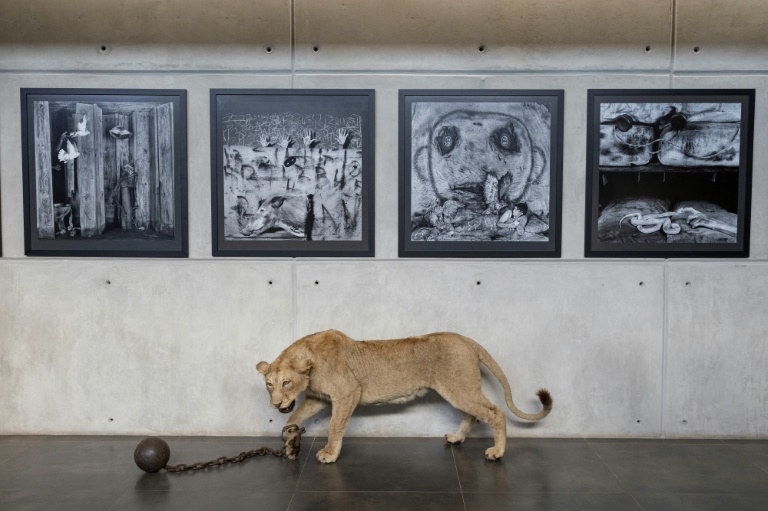
JOHANNESBURG: A lioness towers over a seemingly dead hunter, her paws pinning his body to the ground.
A woman dressed in black, her face replaced by a leopard's head, sits flanked by three prowling wild cats.
The two installations are part of the latest exhibition by 72-year-old American photographic artist Roger Ballen, which opens in Johannesburg, South Africa, next Tuesday.
Renowned for his thought-provoking work into the human psyche, Ballen said the display aims to explore the "antagonistic" relationship between Man and Nature, especially the decimation of African wildlife.
"If you look at the history of humanity, it's just been a destruction of nature, the destruction of wildlife," said Ballen, a New York native, who has lived and worked in South Africa for almost 40 years.
Wildlife numbers across the continent have dropped 66 percent since 1970, according to the World Wildlife Fund. From black rhinos to pangolins, numerous species are now critically endangered.
The display zooms in on the "Golden Age" of African hunting around the end of the 19th century, when Ballen said "the problem started".
It looks at the issue from both an "aesthetic" and "documentative" perspective, said the artist.
The display, titled "End Of The Game", is the first to be hosted in Ballen's newly opened Inside Out Centre for the Arts in an affluent suburb of Johannesburg.
The photographer hopes the space will help lift Johannesburg's cultural scene and become a stop for tourists passing through the city on their way to big game parks.
"We would hope that they come in as one person (and) go out as another," Ballen said.
- 'Flowers and whiskey' -
Clips of former US President Theodore Roosevelt's 1909 hunting trip, where more than 11,000 animals were killed for cataloguing purposes, are played, as the mannequins of two children sporting safari hats sit among the audience.
Near the entrance, a man covered head to toe by a roaring lion's skin holds two screaming human heads in wooden, orange bags.
Photos juxtaposing man and animals adorn the walls that enclose other artworks dominated by taxidermy animals, skeletons, and puppets.
Yet Ballen, who cuts a slender figure in a black shirt over black trousers and black sneakers, refutes descriptions of his work as dark or unsettling.
"I find it interesting. It's bits and pieces of the world around me as I see it," he told AFP in an interview.
"The world isn't necessarily flowers and whiskey and love... life is made up of positives (and) negatives".
Still, the exhibition hopes to "psychologically challenge" and make a "deep impression on people", he said.
This has been a recurring theme in Ballen's career, which has long featured black-and-white photographs of fictionalised scenes aiming to stir the viewer.
"It is not just like looking at another cloud, or another thing on Instagram that you just forget immediately," said Ballen.
"If it has a psychological impact, that's likely to remain in somebody's mind".